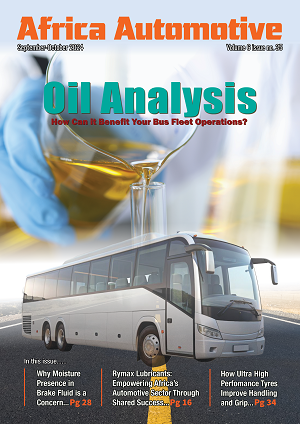More than just a mechanical part, the leaf spring plays a vital role. It supports the heavy loads typical of intercity and regional transport while absorbing the shocks and vibrations of rugged terrain. Yet, despite its importance, the lifespan of a bus leaf spring in African road conditions often falls far short of expectations. This happens unless certain critical factors are properly managed.
So, what exactly shortens the lifespan of a bus leaf spring on African roads? This article will share insights from real experience, highlighting the key factors that influence how long a bus leaf spring lasts on African roads. Whether you’re a fleet manager, a mechanic or an operator, understanding these elements can help you optimize vehicle performance, reduce downtime, and ultimately lower maintenance costs.
-
Road Conditions: The Primary Stress Factor
Let’s begin with the most obvious challenge, the African roads. While major highways in some Africa countries are improving, vast stretches of rural and intercity routes remain unpaved, potholed or poorly maintained. These conditions subject leaf springs to constant pounding, twisting and flexing beyond their design limits.
More often, buses traverse roads where potholes are major, forcing sudden, violent compression of the suspension. Over time, such repeated impacts lead to metal fatigue. This is a leading cause of leaf spring failure. Corrugations, sharp-edged gravel, and sudden elevation changes further increase stress concentrations. This is especially true at the clamps and eyes where cracks typically begin.
The takeaway? While you can’t control the road’s condition, you can plan routes strategically and avoid known trouble zones when possible. You can also conduct regular inspections to catch early signs of damage.
Also Read: Automotive Suspensions – Understanding the basics of Automotive Suspension
-
Overloading: A Silent Killer of Leaf Springs
Overloading is rampant in African transport systems. Economic pressure often leads operators to carry more passengers or cargo than a bus is rated for, sometimes by 50% or more. Each extra ton dramatically increases the load on the leaf springs.
Overloaded leaf springs show visible sagging, permanent deformation and accelerated wear. The layers of the spring stack begin to rub against each other under excessive load. This leads to friction, abrasion and cracking, especially if lubrication between leaves is inadequate.
Overloading compromises safety and longevity. The short-term gain from extra cargo or passenger is dwarfed by the cost of constant spring replacements. Additionally, increased fuel consumption due to poor suspension efficiency becomes a factor.
-
Quality and Material of the Leaf Spring
In some African markets, cost-cutting leads to the use of substandard materials. Low-grade steel, improper heat treatment or poor manufacturing processes. These springs may look identical to OEM parts but fail within months under the same conditions.
More than 30% of leaf springs labeled as “heavy-duty” did not meet international tensile strength standards. Inferior alloys are particularly vulnerable to fatigue and corrosion, and they often fail prematurely under cyclic loading.
Nonetheless, it is always recommended to invest in high-quality, certified leaf springs, even if they cost more upfront. Think of it as an insurance policy. Better materials and proper heat treatment can extend the life of a spring by two or even three times.
Also Read: Automotive suspension market: Accelerated shift from passive to active suspension systems
-
Maintenance and Lubrication Practices
Leaf springs rely on thin layers of lubricant (often graphite-based) between the stacked leaves to reduce inter-leaf friction. When this lubrication breaks down or is never applied, it leads to rapid wear and internal damage.
Besides, routine greasing of leaf springs is often skipped during servicing. Dust and contaminants accumulate, forming an abrasive paste that grinds away the steel. Over time, this creates surface cracks and reduces load-bearing capacity. A few minutes of attention every 5,000 km can significantly extend the life of the suspension system.
-
Driving Practices and Speed Management
A driver plays a surprisingly important role in leaf spring longevity. Aggressive driving, speeding over potholes, sudden braking, or fast cornering, increases dynamic loads on the suspension. Even properly loaded buses can suffer spring damage if driven recklessly.
A transport company can reduce its spring replacement frequency by 40% simply by introducing driver training on smooth driving techniques. Encouraging drivers to slow down on rough sections, avoid curbs, and maintain consistent speeds greatly reduces impact stress on the leaf springs.
Electronic monitoring systems (like GPS with driving behavior analytics) are becoming more accessible and can help reinforce good habits. It’s a smart investment for any fleet.
-
Corrosion and Environmental Exposure
Corrosion is another silent threat, especially in coastal regions or areas with high humidity and road salting during rainy seasons. Moisture, dust and road chemicals accelerate rust formation on leaf springs, particularly at stress points like the spring eyes and clamp areas.
For example, fleets operating in West Africa have a higher rate of corrosion, where leaf springs are rusting at the mounting points after just one year. The primary culprit? Continuous exposure to wet conditions without protective coatings or timely cleaning.
However, regular washing, especially after rainy seasons or off-road travel, helps. Some operators apply rust-inhibiting sprays or use galvanized or shot-peened springs for better resistance. These small steps can prevent premature failure due to corrosion.
-
Design and Compatibility
The original design of the leaf spring must match the vehicle’s actual operating profile. Many buses in Africa are adapted from urban-duty models to handle longer, rougher routes with heavier loads. Using a leaf spring designed for city use in a rural long-haul context is a recipe for early failure.
Moreover, in cases where operators switched to multi-leaf, longer-span springs with reinforced eyes, they found that failure rates dropped significantly. Ensuring that the spring rate, arch height, and eye diameter are appropriate for the terrain and loading patterns makes a substantial difference. Consequently, consulting with suspension specialists before any retrofit or replacement ensures you’re not compromising safety for cost.
-
Frequency of Use and Mileage Accumulation
High daily mileage is common in African transport networks. Buses often run 12–16 hours a day, covering hundreds of kilometers. The more the springs flex and return, the faster fatigue accumulates.
Frequent operation without rest periods prevents the metal from “recovering” from stress cycles. Combined with poor road conditions and maintenance gaps, this high usage rate accelerates wear.
Scheduling periodic full inspections, especially every 60,000 to 80,000 km, can catch problems early. Replacing springs proactively, before disastrous failure, saves money and enhances passenger and cargo safety.
Extending the Lifespan of Your Bus Leaf Spring
The lifespan of a bus leaf spring in Africa isn’t solely a matter of quality, it’s a balance of several interdependent factors. Road conditions, overloading, material quality, maintenance, driving habits, environmental exposure, design compatibility and usage frequency all play crucial roles.
Transport businesses that treat leaf spring maintenance as a strategic priority, “not just a repair task,” see fewer breakdowns, lower operating costs, and improved passenger satisfaction. Simple actions like training drivers, investing in quality parts, and following a disciplined maintenance schedule go a long way.
Meanwhile, African infrastructure continues to improve, and so must an operator’s approach to vehicle care. The bus leaf spring may be a small component, but its health directly reflects the reliability and safety of our transport networks. So next time you evaluate your maintenance budget, ask yourself: Are you protecting your investment, or are you setting the business up for failure? Because when it comes to African transport, every spring counts.




